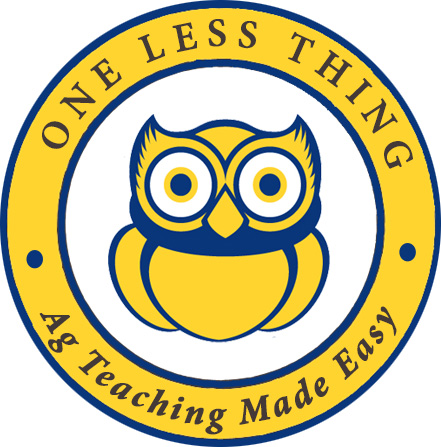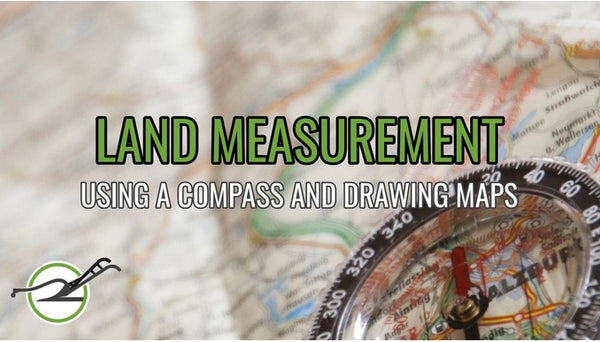Soil Science activity - dirt crayons (soil for us Ag teachers)
Using a couple of sources I'll quickly review how to take their activity and make it as meaningful for your class and limit the frustrations you always find with an unproven activity.
1. Activity - Creating a soil crayon using locally available soils and paraffin wax.
2. Here are the simplified steps:
- Find air dried soil from various locations with different colors.
- Place the soil in a cloth and hammer it until a fine powder is created. Mortar and pestles or electric coffee grinders work well too. Sift out the big pieces.
- Cut slivers of paraffin wax (from the grocery store) and place them in a mason jar. Once you have a jar full, then place it in a hot water bath to melt.
- Once melted, pour the wax into a plastic jar or other plastic container. Mix an equal amount of soil.
- Stir and pour into wax molds. Centrifuge tubes are suggested, I prefer the infant medicine syringes you can get from the local pharmacy.
- Allow the mixture to dry and you have soil crayons.
3. Pitfalls, Tweaks, and Disadvantages
Great activity, but ...there's a good bit of prep that goes along with this.
- First, who has air dried soil laying around their classroom? If you don't already keep a box of Ziploc bags or plastic containers in your truck, then do that now. You never know what you'll stop on the road to pick up for class. Just add interesting soil colors to your list of stop and gets. Sorry, you won't be able to do this activity tomorrow morning.
- Plan some time to beat the daylights about of the soil. Unless you have a coffee grinder you are willing to part with. Because I wouldn't make coffee in that thing after grinding soil. Plan on sifting out the larger pieces as well. Not that an FFA chapter would ever have anyone with any pantyhose that have runs in them.
- You have to make a trip to the grocery store to get the wax. I would suggest trying a potato peeler over bringing a sharp enough knife to shave wax into mason jars. Also, you'll need to decide if you'll have a hot plate for every group to melt the wax. Or instead, one hot plate with a large pot of hot water and many jars of wax melting for your students at the front of the room.
- There's molten wax involved. Gloves would be great for students in this activity. Better yet, find the oldest, ugliest pair of welding gloves you have and do the pouring yourself. That should save a few phone calls and trips to the nurse's office.
- They suggest chop sticks as stirrers. Why not coffee stirrers or juice box straws? You'll notice my theme here. Cheap or free is always superior.
- Be prepared to part with some containers that have dried wax in them. You might be able to reuse them, just don't get caught in a pinch where you have to use your favorite, all-purpose cup because it's the only thing within arm's reach.
- Do you have crayon shaped molds or centrifuge tubes? Nope, I don't either. I do have small children. Every time they get sick and go on antibiotics the pharmacy gives us a needless syringe to draw up the medicine for the kiddos. It looks like a crayon to me. Between your family and all your students you should be able to round up a few of these. Just heat up the plastic spout on the end near a flame and mash it flat. Some larger injection syringes come in their own containers. That's worth asking your local Vet, Pharmacist, or local producer if they have any. They should work just as well.
- How do you get them out of the plastic? Place the hardened crayon and tube in hot water briefly to slightly melt the wax on the outside.
4. How does this activity help me?
Do this activity in conjunction with your lessons on soil profiles and what kinds of different soil profiles that are in your area. Once you get the crayons made, then:
- Break the students into groups.
- Give them each a sheet of white bulletin board paper.
- Each group gets a local soil profile. They should draw an outline of each horizon on the sheet and pick the correct soil crayon to color in each horizon in their soil profile. Example soil profiles would be:
- lowland soils near streams
- upland ridge soils
- prime cropland soil
- marginal cropland soil
- highly eroded soil
- Label the horizons on their soil cross-section paper. You can take it further and have them provide a brief description of the soil, where to find it, benefits/drawbacks...
- Post them where all can see what a wonderful and creative teacher you are.
Summary:
I think this is a very creative activity. It will take some prep and one or two tries before you get a good feel on what the steps are for you and your classes. We'd love to see your results. Send me some feedback and follow us on Pinterest and Twitter .
Have a great week at school!
Links:
http://www.nrcs.usda.gov/Internet/FSE_DOCUMENTS/nrcs142p2_010928.pdf
http://www.nrcs.usda.gov/wps/portal/nrcs/detail/ct/people/teachers/?cid=nrcs142p2_011212
http://doctordirt.org/soil-crayons



